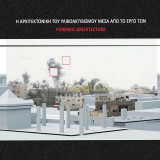Forensic architecture is an emerging branch of architecture that deals with the investigation of state crimes and incidents of violence using architectural tools. Architects involved in researching such incidents use materials such as maps, images, videos, drawings, official documents, and testimonies related to the place and time of the criminal act to present a more comprehensive and multifaceted understanding of the events. Their main goal is to uncover inconsistencies in the institutional framework and in the exercise of power, thereby deconstructing dominant narratives that undermine truth and justice.
Focusing on the work of the Forensic Architecture group, this study aims to raise questions about theories, practices, and, interdisciplinary approaches in architecture that intersect with archaeology, legal, and political science, also engaging collective subjects such as activist organizations, victim groups, entities, and institutions. The objective of this work is to contribute to a discussion on new languages in architecture that combine digital tools, criticism, and activism, with the aim of promoting social and environmental justice
